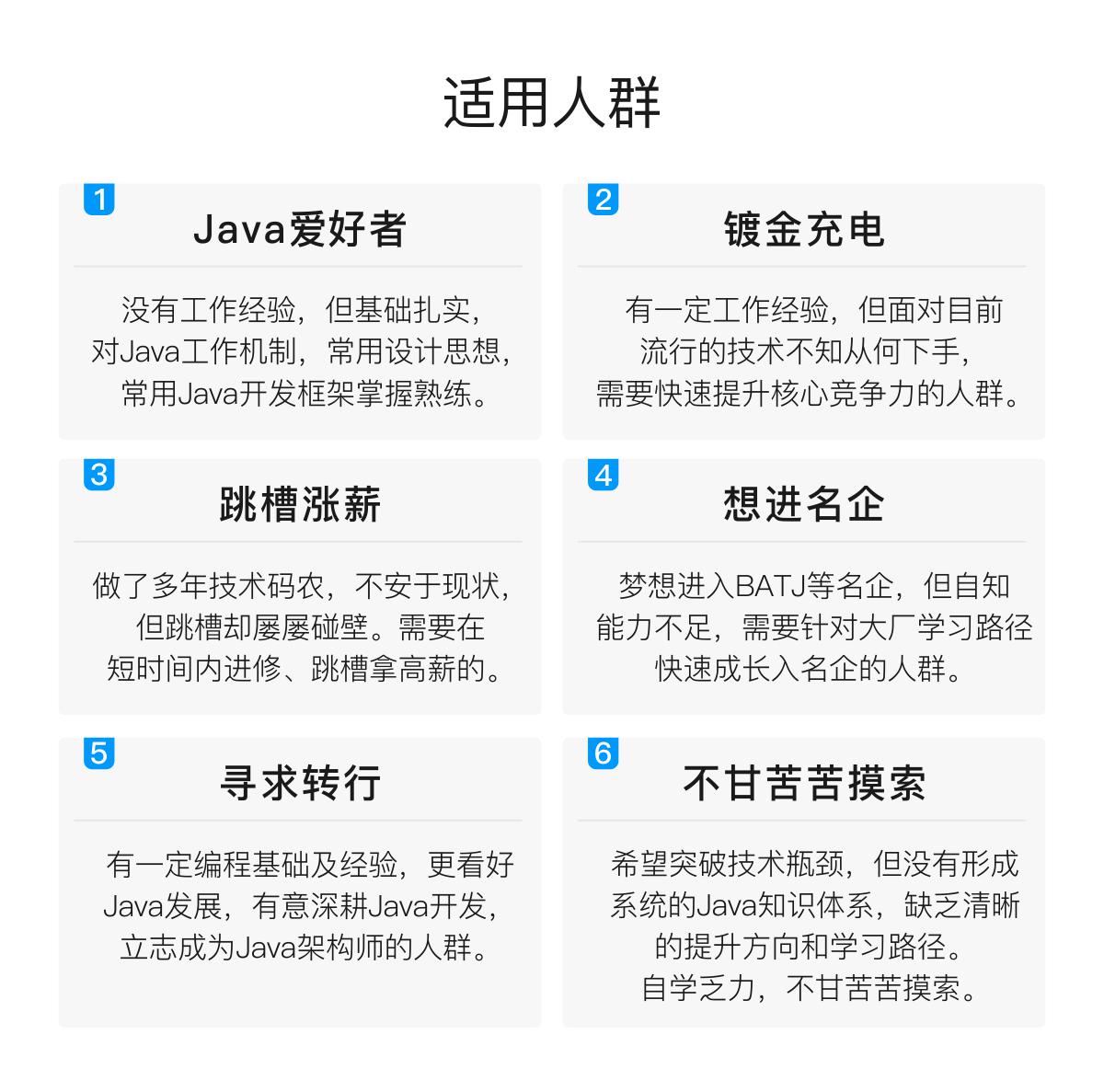server.tomcat.protocol-header-https-value= https
提取远程ip的HTTP头的名称。 例如X-FORWARDED-FOR
server.tomcat.remote-ip-header=
用于解码URI的字符编码。
server.tomcat.uri-encoding= UTF-8
访问日志目录。
server.undertow.accesslog.dir=
启用访问日志。
server.undertow.accesslog.enabled= false
访问日志的格式化模式。
server.undertow.accesslog.pattern= common
每个缓冲区的大小字节数。
server.undertow.buffer-size=
每个区域的缓冲区数。
server.undertow.buffers-per-region=
在Java堆之外分配缓冲区。
server.undertow.direct-buffers=
为工作者创建的I / O线程数。
server.undertow.io-threads=
工作线程数。
server.undertow.worker-threads=
如果X-Forwarded- *头应该应用于HttpRequest。
server.use-forward-headers=
自由标记(自由标记自动配置)
设置是否允许HttpServletRequest属性重写(隐藏)控制器生成的同名模型属性。
spring.freemarker.allow-request-override= false
设置是否允许HttpSession属性重写(隐藏)控制器生成的相同名称的模型属性。
spring.freemarker.allow-session-override= false
启用模板缓存。
spring.freemarker.cache= false
模板编码。
spring.freemarker.charset= UTF-8
检查模板位置是否存在。
spring.freemarker.check-template-location= true
Content-Type值。
spring.freemarker.content-type= text/html
启用此技术的MVC视图分辨率。
spring.freemarker.enabled= true
设置在与模板合并之前是否应将所有请求属性添加到模型中。
spring.freemarker.expose-request-attributes= false
设置在与模板合并之前是否应将所有HttpSession属性添加到模型中。
spring.freemarker.expose-session-attributes= false
设置是否公开一个RequestContext供Spring 的宏库使用,名称为“springMacroRequestContext”。
spring.freemarker.expose-spring-macro-helpers= true
首选文件系统访问模板加载。 文件系统访问可以对模板更改进行热检测。
spring.freemarker.prefer-file-system-access= true
前缀,在构建URL时先查看名称。
spring.freemarker.prefix=
所有视图的RequestContext属性的名称。
spring.freemarker.request-context-attribute=
公开的FreeMarker密钥将被传递给FreeMarker的配置。
spring.freemarker.settings.*=
后缀,在构建URL时附加到查看名称。
spring.freemarker.suffix=
逗号分隔的模板路径列表。
spring.freemarker.template-loader-path= classpath:/templates/
可以解决的视图名称的白名单。
spring.freemarker.view-names=
groovr模板(Groovy模板自动配置)
设置是否允许HttpServletRequest属性重写(隐藏)控制器生成的同名模型属性。
spring.groovy.template.allow-request-override= false
设置是否允许HttpSession属性重写(隐藏)控制器生成的相同名称的模型属性。
spring.groovy.template.allow-session-override= false
启用模板缓存。
spring.groovy.template.cache=
模板编码。
spring.groovy.template.charset= UTF-8
检查模板位置是否存在。
spring.groovy.template.check-template-location= true
请参阅GroovyMarkupConfigurer
spring.groovy.template.configuration.*=
Content-Type值。
spring.groovy.template.content-type= test/html
启用此技术的MVC视图分辨率。
spring.groovy.template.enabled= true
设置在与模板合并之前是否应将所有请求属性添加到模型中。
spring.groovy.template.expose-request-attributes= false
设置在与模板合并之前是否应将所有HttpSession属性添加到模型中。
spring.groovy.template.expose-session-attributes= false
设置是否公开一个RequestContext供Spring Spring的宏库使用,名称为“springMacroRequestContext”。
spring.groovy.template.expose-spring-macro-helpers= true
前缀,在构建URL时先查看名称。
spring.groovy.template.prefix=
所有视图的RequestContext属性的名称。
spring.groovy.template.request-context-attribute=
模板路径。
spring.groovy.template.resource-loader-path= classpath:/templates/
后缀,在构建URL时附加到查看名称。
spring.groovy.template.suffix= .tpl
可以解决的视图名称的白名单。
spring.groovy.template.view-names=
spring Hateoas 配置
指定应用程序/ hal + json响应是否应发送到接受application / json的请求。
spring.hateoas.use-hal-as-default-json-media-type= true
HTTP 消息转换
首选JSON映射程序用于HTTP消息转换。 设置为“gson”强制使用Gson,当它和Jackson都在类路径上时。
spring.http.converters.preferred-json-mapper= jackson
HTTP 编码(Http编码属性)
HTTP请求和响应的字符集。 如果未明确设置,则添加到“Content-Type”头。
spring.http.encoding.charset= UTF-8
启用http编码支持。
spring.http.encoding.enabled= true
将编码强制到HTTP请求和响应上配置的字符集。
spring.http.encoding.force= true
Jackson(解析json和序列化json) 配置
日期格式字符串或全限定日期格式类名。 例如yyyy-MM-dd HH:mm:ss。
spring.jackson.date-format=
Jones开/关功能,影响Java对象反序列化的方式。
spring.jackson.deserialization.*=
关闭或者打开Jackson 功能
spring.jackson.generator.*=
Joda日期时间格式字符串。 如果未配置,如果配置了格式字符串,则“日期格式”将用作后备。
spring.jackson.joda-date-time-format=
用于格式化的区域设置。
spring.jackson.locale=
jackson通用开/关功能。
spring.jackson.mapper.*=
Jackson 解析器的开/关功能。
spring.jackson.parser.*=
Jackson的PropertyNamingStrategy的一个常量。 也可以是PropertyNamingStrategy子类的完全限定类名。
spring.jackson.property-naming-strategy=
Jones开/关功能,影响Java对象序列化的方式。
spring.jackson.serialization.*=
控制在序列化期间包含属性。 配置了Jackson的JsonInclude.Include枚举中的一个值。
spring.jackson.serialization-inclusion=
格式化日期时使用的时区。 例如America / Los_Angeles
spring.jackson.time-zone=
Jersey 配置
作为应用程序的基本URI的路径。 如果指定,则覆盖“@ApplicationPath”的值。
spring.jersey.application-path=
jersey过滤器链顺序。
spring.jersey.filter.order= 0
init参数传递到Jersey通过servlet或过滤器。
spring.jersey.init.*=
jersey整合型。可以是“servlet”也可以是“filter”。
spring.jersey.type= servlet
spring 视图分解器 配置
启用后退解析支持。
spring.mobile.devicedelegatingviewresolver.enable-fallback= false
启用设备视图解析器。
spring.mobile.devicedelegatingviewresolver.enabled= false
前缀,用于查看移动设备的名称。
spring.mobile.devicedelegatingviewresolver.mobile-prefix= mobile/
后缀,附加到查看移动设备的名称。
spring.mobile.devicedelegatingviewresolver.mobile-suffix=
前缀,用于查看普通设备的名称。
spring.mobile.devicedelegatingviewresolver.normal-prefix=
后缀,附加到查看普通设备的名称。
spring.mobile.devicedelegatingviewresolver.normal-suffix=
前缀,用于查看平板设备的名称。
spring.mobile.devicedelegatingviewresolver.tablet-prefix= tablet/
后缀,附加到查看平板电脑设备的名称。
spring.mobile.devicedelegatingviewresolver.tablet-suffix=
移动网站首选项 (站点首选项自动配置)
启用SitePreferenceHandler。
spring.mobile.sitepreference.enabled= true
MUSTACHE模板(Mustache AutoConfiguration)
启用模板缓存。
spring.mustache.cache= false
模板编码。
spring.mustache.charset= UTF-8
检查模板位置是否存在。
spring.mustache.check-template-location= true
Content-Type值
spring.mustache.content-type= text/html
启用此技术的MVC视图分辨率。
spring.mustache.enabled= true
前缀应用于模板名称。
spring.mustache.prefix= classpath:/templates/
后缀应用于模板名称。
spring.mustache.suffix= .html
可以解决的视图名称的白名单。
spring.mustache.view-names=
SPRING MVC (Web Mvc 配置)
异步请求处理超时之前的时间量(以毫秒为单位)。
spring.mvc.async.request-timeout=
要使用的日期格式。 例如dd / MM / yyyy。
spring.mvc.date-format=
发送TRACE请求到FrameworkServlet doService方法。
spring.mvc.dispatch-trace-request= false
发送OPTIONS请求到FrameworkServlet doService方法。
spring.mvc.dispatch-options-request= false
启用favicon.ico的解析。
spring.mvc.favicon.enabled= true
如果在重定向方案期间应该忽略“默认”模型的内容。
spring.mvc.ignore-default-model-on-redirect= true
要使用的区域设置。
spring.mvc.locale=
将文件扩展名映射到内容协商的媒体类型。
spring.mvc.media-types.*=
消息代码格式策略。 例如PREFIX_ERROR_CODE。
spring.mvc.message-codes-resolver-format=
用于静态资源的路径模式。
spring.mvc.static-path-pattern= /**
如果没有发现处理程序来处理请求,则应抛出“NoHandlerFoundException”。
spring.mvc.throw-exception-if-no-handler-found= false
Spring MVC视图前缀。
spring.mvc.view.prefix=
Spring MVC视图后缀。
spring.mvc.view.suffix=
#SPRING RESOURCES HANDLING(ResourceProperties)资源处理
spring.resources.add-mappings = true #启用默认资源处理。
spring.resources.cache-period = #由资源处理程序提供的资源的缓存期,以秒为单位。
spring.resources.chain.cache = true #在资源链中启用缓存。
spring.resources.chain.enabled = #启用Spring资源处理链。默认情况下禁用,除非启用了至少一个策略。
spring.resources.chain.html-application-cache = false #启用HTML5应用程序缓存清单重写。
spring.resources.chain.strategy.content.enabled = false #启用内容版本策略。
spring.resources.chain.strategy.content.paths = / ** #应用于版本策略的模式的逗号分隔列表。
spring.resources.chain.strategy.fixed.enabled = false #启用固定版本策略。
spring.resources.chain.strategy.fixed.paths = #应用于版本策略的逗号分隔的模式列表。
spring.resources.chain.strategy.fixed.version = #用于版本策略的版本字符串。
spring.resources.static-locations = classpath:/ META-INF / resources /,classpath:/ resources /,classpath:/ static /,classpath:/ public / #静态资源的位置。
#SPRING SOCIAL(SocialWebAutoConfiguration)集群
spring.social.auto-connection-views = false #启用支持的提供程序的连接状态视图。
#SPRING SOCIAL FACEBOOK(FacebookAutoConfiguration)
spring.social.facebook.app-id = #您的应用程序的Facebook应用程序ID
spring.social.facebook.app-secret = #你的应用程序的Facebook应用程序密码
#SPRING SOCIAL LINKEDIN(LinkedInAutoConfiguration)
spring.social.linkedin.app-id = #您的应用程序的LinkedIn应用程序ID
spring.social.linkedin.app-secret = #您的应用程序的LinkedIn App Secret
#SPRING SOCIAL TWITTER(TwitterAutoConfiguration)
spring.social.twitter.app-id = #你的应用程序的Twitter应用程序ID
spring.social.twitter.app-secret = #你的应用程序的Twitter App Secret
#THYMELEAF Thymeleaf模板引擎配置
spring.thymeleaf.cache = true #启用模板缓存。
spring.thymeleaf.check-template-location = true #检查模板位置是否存在。
spring.thymeleaf.content-type = text / html #Content-Type值。
spring.thymeleaf.enabled = true #启用MVC Thymeleaf视图分辨率。
spring.thymeleaf.encoding = UTF-8 #模板编码。
spring.thymeleaf.excluded-view-names = #应该从解决方案中排除的视图名称的逗号分隔列表。
spring.thymeleaf.mode = HTML5 #应用于模板的模板模式。另请参见StandardTemplateModeHandlers。
spring.thymeleaf.prefix = classpath:/ templates / #在构建URL时预先查看名称的前缀。
spring.thymeleaf.suffix = .html #构建URL时附加查看名称的后缀。
spring.thymeleaf.template-resolver-order = #链中模板解析器的顺序。
spring.thymeleaf.view-names = #可以解析的视图名称的逗号分隔列表。
#VELOCITY TEMPLATES(VelocityAutoConfiguration)
spring.velocity.allow-request-override = false #设置是否允许HttpServletRequest属性覆盖(隐藏)控制器生成的同名的模型属性。
spring.velocity.allow-session-override = false #设置是否允许HttpSession属性重写(隐藏)控制器生成的同名的模型属性。
spring.velocity.cache = #启用模板缓存。
spring.velocity.charset = UTF-8 #模板编码。
spring.velocity.check-template-location = true #检查模板位置是否存在。
spring.velocity.content-type = text / html #Content-Type值。
spring.velocity.date-tool-attribute = #在视图的Velocity上下文中公开的DateTool辅助对象的名称。
spring.velocity.enabled = true #启用此技术的MVC视图分辨率。
spring.velocity.expose-request-attributes = false #设置在与模板合并之前是否应将所有请求属性添加到模型中。
spring.velocity.expose-session-attributes = false #设置在与模板合并之前是否应将所有HttpSession属性添加到模型中。
spring.velocity.expose-spring-macro-helpers = true #设置是否公开一个RequestContext供Spring Spring的宏库使用,名称为“springMacroRequestContext”。
spring.velocity.number-tool-attribute = #在视图的Velocity上下文中公开的NumberTool帮助对象的名称。
spring.velocity.prefer-file-system-access = true #首选文件系统访问模板加载。文件系统访问可以对模板更改进行热检测。
spring.velocity.prefix = #前缀,用于在构建URL时查看名称。
spring.velocity.properties。* = #附加速度属性。
spring.velocity.request-context-attribute = #所有视图的RequestContext属性的名称。
spring.velocity.resource-loader-path = classpath:/ templates / #模板路径。
spring.velocity.suffix = .vm #构建URL时附加到查看名称的后缀。
spring.velocity.toolbox-config-location = #Velocity Toolbox配置位置。例如`/ WEB-INF / toolbox.xml’
spring.velocity.view-names = #可以解决的视图名称的白名单。
#----------------------------------------
#安全属性
#----------------------------------------
#SECURITY(SecurityProperties)
security.basic.authorize-mode = role #应用安全授权模式。
security.basic.enabled = true #启用基本身份验证。
security.basic.path = / ** #安全路径的逗号分隔列表。
security.basic.realm = Spring #HTTP基本的领域名称。
security.enable-csrf = false #启用跨站点请求伪造支持。
security.filter-order = 0 #安全过滤器连锁订单。
security.headers.cache = true #启用缓存控制HTTP头。
security.headers.content-type = true# 启用“X-Content-Type-Options”头。
security.headers.frame = true #启用“X-Frame-Options”标题。
security.headers.hsts = # HTTP严格传输安全(HSTS)模式(无,域,全部)。
security.headers.xss = true #启用跨站点脚本(XSS)保护。
security.ignored = #从默认安全路径中排除的路径的逗号分隔列表。
security.require-ssl = false #为所有请求启用安全通道。
security.sessions = stateless #会话创建策略(永远不会,if_required,无状态)。
security.user.name = user #默认用户名。
security.user.password = #默认用户名的密码。默认情况下,启动时会记录随机密码。
security.user.role = USER #为默认用户名授予角色。
#SECURITY OAUTH2 CLIENT(OAuth2ClientProperties
security.oauth2.client.client-id = #OAuth2客户端ID。
security.oauth2.client.client-secret = #OAuth2客户机密码。默认生成随机密码
#SECURITY OAUTH2 RESOURCES(ResourceServerProperties
security.oauth2.resource.id = #资源的标识符。
security.oauth2.resource.jwt.key-uri = #JWT令牌的URI。如果值不可用并且密钥是公共的,可以设置。
security.oauth2.resource.jwt.key-value = #JWT令牌的验证密钥。可以是对称秘密或PEM编码的RSA公钥。
security.oauth2.resource.prefer-token-info = true #使用令牌信息,可以设置为false以使用用户信息。
security.oauth2.resource.service-id = resource #
security.oauth2.resource.token-info-uri = #令牌解码端点的URI。
security.oauth2.resource.token-type = #使用userInfoUri时发送的令牌类型。
security.oauth2.resource.user-info-uri = #用户端点的URI。
#SECURITY OAUTH2 SSO(OAuth2SsoProperties
security.oauth2.sso.filter-order = #如果不提供显式的WebSecurityConfigurerAdapter,则应用过滤器顺序
security.oauth2.sso.login-path = / login #登录页面的路径,即触发重定向到OAuth2授权服务器的路径
----------------------------------------
DATA PROPERTIES 数据性能
----------------------------------------
FLYWAY (FlywayProperties)
flyway.baseline-description = #
flyway.baseline-version = 1 #版本开始迁移
flyway.baseline-on-migrate = #
flyway.check-location = false #检查迁移脚本位置是否存在。
flyway.clean-on-validation-error = #
flyway.enabled = true #启用飞行路线。
flyway.encoding = #
flyway.ignore-failed-future-migration = #
flyway.init-sqls = #执行SQL语句,以便在获取连接后立即初始化连接。
flyway.locations = classpath:db / migration #迁移脚本的位置
flyway.out-of-order = #如果您希望Flyway创建自己的DataSource,则需要使用#path密码
flyway.placeholder-prefix = #
flyway.placeholder-replacement = #
flyway.placeholder-suffix = #
flyway.placeholders。* = #
flyway.schemas = #schemas来更新
flyway.sql-migration-prefix = V #
flyway.sql-migration-separator = #
flyway.sql-migration-suffix = .sql #
flyway.table = #
flyway.url = #要迁移的数据库的JDBC url。如果未设置,则使用主配置的数据源。
flyway.user = #登录要迁移的数据库的用户。
flyway.validate-on-migrate = #
LIQUIBASE (LiquibaseProperties)
liquibase.change-log = classpath:/db/changelog/db.changelog-master.yaml #更改日志配置路径。
liquibase.check-change-log-location = true #检查更改日志位置是否存在。
liquibase.contexts = #使用逗号分隔的运行时上下文列表。
liquibase.default-schema = #默认数据库模式。
liquibase.drop-first = false #首先删除数据库模式。
liquibase.enabled = true #启用liquidibase支持。
liquibase.labels = #使用逗号分隔的运行时标签列表。
liquibase.parameters。* = #更改日志参数。
liquibase.password = #登录要迁移的数据库的密码。
liquibase.url = #要迁移的数据库的JDBC url。 如果未设置,则使用主配置的数据源。
liquibase.user = #登录要迁移的数据库的用户。
DAO (PersistenceExceptionTranslationAutoConfiguration)
spring.dao.exceptiontranslation.enabled= true # 启用持久异常翻译后处理器。
CASSANDRA (CassandraProperties)
spring.data.cassandra.cluster-name = #Cassandra群集的名称。
spring.data.cassandra.compression = #由Cassandra二进制协议支持的压缩。
spring.data.cassandra.connect-timeout-millis = #套接字选项:连接超时。
spring.data.cassandra.consistency-level = #查询一致性级别。
spring.data.cassandra.contact-points = localhost #集群节点地址的逗号分隔列表。
spring.data.cassandra.fetch-size = #查询默认的抓取大小。
spring.data.cassandra.keyspace-name = #要使用的密钥空间名称。
spring.data.cassandra.load-balancing-policy = #负载均衡策略的类名。
spring.data.cassandra.port = #Cassandra服务器端口。
spring.data.cassandra.password = #登录服务器的密码。
spring.data.cassandra.read-timeout-millis = #套接字选项:读取超时。
spring.data.cassandra.reconnection-policy = #重新连接策略类。
spring.data.cassandra.retry-policy = #重试策略的类名。
spring.data.cassandra.serial-consistency-level = #查询串行一致性级别。
spring.data.cassandra.ssl = false #启用SSL支持。
spring.data.cassandra.username = #登录用户的服务器。
ELASTICSEARCH (ElasticsearchProperties)
spring.data.elasticsearch.cluster-name = elasticsearch #弹性搜索集群名称。
spring.data.elasticsearch.cluster-nodes = #集群节点地址的逗号分隔列表。 如果未指定,则启动客户端节点。
spring.data.elasticsearch.properties。* = #用于配置客户端的其他属性。
spring.data.elasticsearch.repositories.enabled = true #启用Elasticsearch存储库。
MONGODB (MongoProperties)
spring.data.mongodb.authentication-database = #验证数据库名称。
spring.data.mongodb.database = test #数据库名称。
spring.data.mongodb.field-naming-strategy = #要使用的FieldNamingStrategy的完全限定名称。
spring.data.mongodb.grid-fs-database = #GridFS数据库名称。
spring.data.mongodb.host = localhost #Mongo服务器主机。
spring.data.mongodb.password = #登录mongo服务器的密码。
spring.data.mongodb.port = 27017 #Mongo服务器端口。
spring.data.mongodb.repositories.enabled = true #启用Mongo存储库。
spring.data.mongodb.uri = mongodb:// localhost / test #Mongo数据库URI。 设置时,主机和端口将被忽略。
spring.data.mongodb.username = #登录mongo服务器的用户。
DATA REST (RepositoryRestProperties)
spring.data.rest.base-path = #由Spring Data REST用于公开存储库资源的基本路径。
spring.data.rest.default-page-size = #页面的默认大小。
spring.data.rest.enable-enum-translation = #通过Spring Data REST默认资源包启用枚举值转换。
spring.data.rest.limit-param-name = #指示一次返回多少结果的URL查询字符串参数的名称。
spring.data.rest.max-page-size = #最大页面大小。
spring.data.rest.page-param-name = #指示要返回的页面的URL查询字符串参数的名称。
spring.data.rest.return-body-on-create = #创建一个实体后返回响应体。
spring.data.rest.return-body-on-update = #更新实体后返回响应体。
spring.data.rest.sort-param-name = #指示排序结果的方向的URL查询字符串参数的名称。
SOLR (SolrProperties)
spring.data.solr.host = http://127.0.0.1:8983/solr #Solr主机。 如果设置了“zk-host”,则被忽略。
spring.data.solr.repositories.enabled = true #启用Solr存储库。
spring.data.solr.zk-host = #ZooKeeper主机地址,格式为HOST:PORT。
数据源 配置 (DataSourceAutoConfiguration & DataSourceProperties)
spring.datasource.continue-on-error = false #初始化数据库时发生错误时不要停止。
spring.datasource.data = #Data(DML)脚本资源引用。
spring.datasource.driver-class-name = #JDBC驱动程序的完全限定名称。默认情况下,根据URL自动检测。
spring.datasource.initialize = true #使用’data.sql’填充数据库。
spring.datasource.jmx-enabled = false #启用JMX支持(如果由底层池提供)。
spring.datasource.jndi-name = #数据源的JNDI位置。设置时,类,网址,用户名和密码将被忽略。
spring.datasource.max-active = #例如100
spring.datasource.max-idle = #例如8
spring.datasource.max等待=
spring.datasource.min-evictable空闲时间-米利斯=
spring.datasource.min-idle = 8
spring.datasource.name = testdb #数据源的名称。
spring.datasource.password = #登录数据库的密码。
spring.datasource.platform = all #在资源模式(schema - $ {platform} .sql)中使用的平台。
spring.datasource.schema = #Schema(DDL)脚本资源引用。
spring.datasource.separator =; #语句分隔符在SQL初始化脚本中。
spring.datasource.sql-script-encoding = #SQL脚本编码。
spring.datasource.test-on-borrow = #例如false
spring.datasource.test-on-return = #例如false
spring.datasource.test-while-idle = #
spring.datasource.time-between-eviction-runs-millis = 1
spring.datasource.type = #要使用的连接池实现的完全限定名称。默认情况下,它是从类路径自动检测的。
spring.datasource.url = #数据库的JDBC url。
spring.datasource.username=
spring.datasource.validation-query=
H2 Web Console (H2ConsoleProperties)
spring.h2.console.enabled = false #启用控制台。
spring.h2.console.path = / h2-console #控制台可用的路径。
JOOQ (JooqAutoConfiguration)
spring.jooq.sql-dialect= # 与配置的数据源通信时使用的SQLDialect JOOQ。 例如POSTGRES
JPA (JpaBaseConfiguration, HibernateJpaAutoConfiguration)
spring.data.jpa.repositories.enabled = true #启用JPA存储库。
spring.jpa.database = #目标数据库进行操作,默认情况下自动检测。可以使用“databasePlatform”属性设置。
spring.jpa.database-platform = #要运行的目标数据库的名称,默认情况下自动检测。可以使用“数据库”枚举来设置。
spring.jpa.generate-ddl = false #启动时初始化模式。
spring.jpa.hibernate.ddl-auto = #DDL模式。这实际上是“hibernate.hbm2ddl.auto”属性的快捷方式。使用嵌入式数据库时默认为“创建删除”,否则为“否”。
spring.jpa.hibernate.naming-strategy = #命名策略完全限定名。
spring.jpa.open-in-view = true #注册OpenEntityManagerInViewInterceptor。将JPA EntityManager绑定到线程以进行请求的整个处理。
spring.jpa.properties。* = #在JPA提供程序上设置的其他本机属性。
spring.jpa.show-sql = false #启用SQL语句的日志记录。
JTA (JtaAutoConfiguration)
spring.jta。* = #技术特定配置
spring.jta.log-dir = #Transaction logs目录。
ATOMIKOS
spring.jta.atomikos.connectionfactory.borrow-connection-timeout = 30 #从池中借用连接的超时(以秒为单位)。
spring.jta.atomikos.connectionfactory.ignore-session-transacted-flag = true #创建会话时是否忽略事务标志。
spring.jta.atomikos.connectionfactory.local-transaction-mode = false #是否需要本地事务。
spring.jta.atomikos.connectionfactory.maintenance-interval = 60 #池的维护线程运行之间的时间(以秒为单位)。
spring.jta.atomikos.connectionfactory.max-idle-time = 60 #从池中清除连接之后的时间(以秒为单位)。
spring.jta.atomikos.connectionfactory.max-lifetime = 0 #在被破坏之前可以将连接合并的时间(以秒为单位)。 0表示无限制。
spring.jta.atomikos.connectionfactory.max-pool-size = 1 #池的最大大小。
spring.jta.atomikos.connectionfactory.min-pool-size = 1 #池的最小大小。
spring.jta.atomikos.connectionfactory.reap-timeout = 0 #借用连接的收获超时(以秒为单位)。 0表示无限制。
spring.jta.atomikos.connectionfactory.unique-resource-name = jmsConnectionFactory #用于在恢复期间标识资源的唯一名称。
spring.jta.atomikos.datasource.borrow-connection-timeout = 30 #从池中借出连接的超时(秒)。
spring.jta.atomikos.datasource.default-isolation-level = #池提供的连接的默认隔离级别。
spring.jta.atomikos.datasource.login-timeout = #用于建立数据库连接的超时(以秒为单位)。
spring.jta.atomikos.datasource.maintenance-interval = 60 #池的维护线程运行之间的时间(以秒为单位)。
spring.jta.atomikos.datasource.max-idle-time = 60 #从池中清除连接之后的时间(以秒为单位)。
spring.jta.atomikos.datasource.max-lifetime = 0 #在被破坏之前可以将连接合并的时间(以秒为单位)。 0表示无限制。
spring.jta.atomikos.datasource.max-pool-size = 1 #池的最大大小。
spring.jta.atomikos.datasource.min-pool-size = 1 #池的最小大小。
spring.jta.atomikos.datasource.reap-timeout = 0 #借用连接的收获超时(以秒为单位)。 0表示无限制。
spring.jta.atomikos.datasource.test-query = #用于在返回连接之前验证连接的SQL查询或语句。
spring.jta.atomikos.datasource.unique-resource-name = dataSource #用于在恢复期间识别资源的唯一名称。
BITRONIX
spring.jta.bitronix.connectionfactory.acquire-increment = 1 #生成池时要创建的连接数。
spring.jta.bitronix.connectionfactory.acquisition-interval = 1 #在获取无效连接后再次尝试获取连接之前等待的时间(以秒为单位)。
spring.jta.bitronix.connectionfactory.acquisition-timeout = 30 #从池中获取连接的超时(以秒为单位)。
spring.jta.bitronix.connectionfactory.allow-local-transactions = true #事务管理器是否允许混合XA和非XA事务。
spring.jta.bitronix.connectionfactory.apply-transaction-timeout = false #当XAResource被登记时,是否应该设置事务超时。
spring.jta.bitronix.connectionfactory.automatic-enlisting-enabled = true #资源是否应该被自动登记和删除。
spring.jta.bitronix.connectionfactory.cache-producer-consumer = true #是否生产和消费者应该被缓存。
spring.jta.bitronix.connectionfactory.defer-connection-release = true #提供程序是否可以在同一连接上运行许多事务,并支持事务交织。
spring.jta.bitronix.connectionfactory.ignore-recovery-failures = false #是否应忽略恢复失败。
spring.jta.bitronix.connectionfactory.max-idle-time = 60 #从池中清除连接之后的时间(以秒为单位)。
spring.jta.bitronix.connectionfactory.max-pool-size = 10 #池的最大大小。 0表示无限制。
spring.jta.bitronix.connectionfactory.min-pool-size = 0 #池的最小大小。
spring.jta.bitronix.connectionfactory.password = #用于连接到JMS提供程序的密码。
spring.jta.bitronix.connectionfactory.share-transaction-connections = false #ACCESSIBLE状态中的连接是否可以在事务的上下文中共享。
spring.jta.bitronix.connectionfactory.test-connections = true #从池中获取连接是否应该进行测试。
spring.jta.bitronix.connectionfactory.two-pc-ordering-position = 1 #在两阶段提交期间该资源应该采取的位置(始终为Integer.MIN_VALUE,始终为Integer.MAX_VALUE)。
spring.jta.bitronix.connectionfactory.unique-name = jmsConnectionFactory #用于在恢复期间标识资源的唯一名称。
spring.jta.bitronix.connectionfactory.use-tm-join = true启动XAResource时是否应使用TMJOIN。
spring.jta.bitronix.connectionfactory.user = #用于连接到JMS提供者的用户。
spring.jta.bitronix.datasource.acquire-increment = 1 #生成池时要创建的连接数。
spring.jta.bitronix.datasource.acquisition-interval = 1 #在获取无效连接后再尝试获取连接之前等待的时间(以秒为单位)。
spring.jta.bitronix.datasource.acquisition-timeout = 30 #从池中获取连接的超时(以秒为单位)。
spring.jta.bitronix.datasource.allow-local-transactions = true #事务管理器是否允许混合XA和非XA事务。
spring.jta.bitronix.datasource.apply-transaction-timeout = false #当XAResource被登记时,是否应该设置事务超时。
spring.jta.bitronix.datasource.automatic-enlisting-enabled = true #资源是否应该被登记和自动删除。
spring.jta.bitronix.datasource.cursor-holdability = #连接的默认游标保持性。
spring.jta.bitronix.datasource.defer-connection-release = true #数据库是否可以在同一连接上运行许多事务,并支持事务交织。
spring.jta.bitronix.datasource.enable-jdbc4-connection-test = #从池中获取连接时是否调用Connection.isValid()。
spring.jta.bitronix.datasource.ignore-recovery-failures = false #是否应忽略恢复失败。
spring.jta.bitronix.datasource.isolation-level = #连接的默认隔离级别。
spring.jta.bitronix.datasource.local-auto-commit = #本地事务的默认自动提交模式。
spring.jta.bitronix.datasource.login-timeout = #用于建立数据库连接的超时(以秒为单位)。
spring.jta.bitronix.datasource.max-idle-time = 60 #从池中清除连接之后的时间(以秒为单位)。
spring.jta.bitronix.datasource.max-pool-size = 10 #池的最大大小。 0表示无限制。
spring.jta.bitronix.datasource.min-pool-size = 0 #池的最小大小。
spring.jta.bitronix.datasource.prepared-statement-cache-size = 0 #准备好的语句高速缓存的目标大小。 0禁用缓存。
spring.jta.bitronix.datasource.share-transaction-connections = false #ACCESSIBLE状态下的连接是否可以在事务的上下文中共享。
spring.jta.bitronix.datasource.test-query = #用于在返回连接之前验证连接的SQL查询或语句。
spring.jta.bitronix.datasource.two-pc-ordering-position = 1 #在两阶段提交期间该资源应该采取的位置(始终为Integer.MIN_VALUE,始终为Integer.MAX_VALUE)。
spring.jta.bitronix.datasource.unique-name = dataSource #用于在恢复期间标识资源的唯一名称。
spring.jta.bitronix.datasource.use-tm-join = true启动XAResource时是否应使用TMJOIN。
EMBEDDED MONGODB (EmbeddedMongoProperties)
spring.mongodb.embedded.features = SYNC_DELAY #启用功能的逗号分隔列表。
spring.mongodb.embedded.version = 2.6.10 #Mongo使用版本。
----------------------------------------
整合属性
----------------------------------------
#ACTIVEMQ(ActiveMQProperties)
spring.activemq.broker-url = #ActiveMQ代理的URL。 默认自动生成。 例如tcp:// localhost:61616
spring.activemq.in-memory = true #指定默认代理URL是否应在内存中。 如果指定了一个显式代理,则被忽略。
spring.activemq.password = #登录密码的代理。
spring.activemq.pooled = false #指定是否创建PooledConnectionFactory而不是常规的ConnectionFactory。
spring.activemq.user = #代理登录用户。
ARTEMIS (ArtemisProperties)
spring.artemis.embedded.cluster-password = #群集密码。 默认情况下随机生成。
spring.artemis.embedded.data-directory = #日志文件目录。 如果持久性被关闭,则不需要。
spring.artemis.embedded.enabled = true #如果Artemis服务器API可用,启用嵌入式模式。
spring.artemis.embedded.persistent = false #启用持久存储。
spring.artemis.embedded.queues = #启动时要创建的队列的逗号分隔列表。
spring.artemis.embedded.server-id = #服务器ID。 默认情况下,使用自动递增的计数器。
spring.artemis.embedded.topics = #启动时要创建的主题的逗号分隔列表。
spring.artemis.host = localhost #Artemis代理主机。
spring.artemis.mode = #Artemis部署模式,默认情况下自动检测。 可以显式设置为“native”或“embedded”。
spring.artemis.port = 61616 #Artemis 中间件端口。
SPRING BATCH(Batch 配置)
spring.batch.initializer.enabled = true #如果需要,在启动时创建所需的批处理表。
spring.batch.job.enabled = true #在启动时执行上下文中的所有Spring批处理作业。
spring.batch.job.names = #在启动时执行的作业名称的逗号分隔列表(例如job1,job2)。 默认情况下,执行在上下文中找到的所有作业。
spring.batch.schema = classpath:org / springframework / batch / core / schema - @@ platform @@。sql #用于初始化数据库模式的SQL文件的路径。
spring.batch.table-prefix = #所有批次元数据表的表前缀。
HORNETQ (HornetQ 配置)
spring.hornetq.embedded.cluster-password = #集群密码。 默认情况下随机生成。
spring.hornetq.embedded.data-directory = #日志文件目录。 如果持久性被关闭,则不需要。
spring.hornetq.embedded.enabled = true #如果HornetQ服务器API可用,启用嵌入式模式。
spring.hornetq.embedded.persistent = false #启用持久存储。
spring.hornetq.embedded.queues = #启动时要创建的队列的逗号分隔列表。
spring.hornetq.embedded.server-id = #服务器ID。 默认情况下,使用自动递增的计数器。
spring.hornetq.embedded.topics = #在启动时创建的主题的逗号分隔列表。
spring.hornetq.host = localhost #HornetQ代理主机。
spring.hornetq.mode = #HornetQ部署模式,默认情况下自动检测。 可以显式设置为“native”或“embedded”。
spring.hornetq.port = 5445 #HornetQ代理端口。
JMS (Jms 配置)
连接工厂JNDI名称。 设置时,优先于其他连接工厂自动配置。
spring.jms.jndi-name=
容器的确认模式。 默认情况下,监听器被自动确认处理。
spring.jms.listener.acknowledge-mode=
启动时自动启动容器。
spring.jms.listener.auto-startup= true
最小并发消费者数。
spring.jms.listener.concurrency=
最大并发消费者数。
spring.jms.listener.max-concurrency=
指定默认的目的地类型是否为主题。
spring.jms.pub-sub-domain= false
RABBIT (Rabbit 配置)
客户端应连接到的逗号分隔的地址列表。
spring.rabbitmq.addresses =
spring.rabbitmq.dynamic = true # 创建一个AmqpAdmin bean。
spring.rabbitmq.host = localhost# RabbitMQ主机。
spring.rabbitmq.listener.acknowledge-mode = # 容器的确认模式。
spring.rabbitmq.listener.auto-startup = true# 启动时自动启动容器。
spring.rabbitmq.listener.concurrency = # 最少消费者数。
spring.rabbitmq.listener.max-concurrency = # 最大消费者数。
spring.rabbitmq.listener.prefetch = # 在单个请求中要处理的消息数。它应该大于或等于事务大小(如果使用)。
spring.rabbitmq.listener.transaction-size = # 在事务中要处理的消息数。为了获得最佳结果,它应该小于或等于预取计数。
spring.rabbitmq.password = # 登录以对代理进行身份验证。
spring.rabbitmq.port = 5672# RabbitMQ端口。
spring.rabbitmq.requested-heartbeat = # 请求的心跳超时,以秒为单位;零为无。
spring.rabbitmq.ssl.enabled = false# 启用SSL支持。
spring.rabbitmq.ssl.key-store = # 保存SSL证书的密钥存储区的路径。
spring.rabbitmq.ssl.key-store-password = # 用于访问密钥库的密码。
spring.rabbitmq.ssl.trust-store = # 保存SSL证书的Trust存储。
spring.rabbitmq.ssl.trust-store-password = # 用于访问信任存储的密码。
spring.rabbitmq.username = # 登录用户对代理进行身份验证。
spring.rabbitmq.virtual-host = # 连接到代理时使用的虚拟主机。
端点配置(EndpointCorsProperties)
设置是否支持凭据。 未设置时,不支持凭据。
endpoints.cors.allow-credentials=
在请求中允许的头文件逗号分隔列表。 '*'允许所有标题。
endpoints.cors.allowed-headers=
逗号分隔的允许的方法列表。 '*'允许所有方法。
endpoints.cors.allowed-methods= GET
逗号分隔的起始列表允许。 '*'允许所有来源。 未设置时,禁用CORS支持。
endpoints.cors.allowed-origins=
包含在响应中的标题的逗号分隔列表。
endpoints.cors.exposed-headers=
客户端可以缓存飞行前请求的响应时间(秒)。
endpoints.cors.max-age= 1800
JMX ENDPOINT (EndpointMBeanExportProperties) (端点MBean导出属性)
JMX域名。 如果设置为’spring.jmx.default-domain’的值初始化。
endpoints.jmx.domain=
启用所有端点的JMX导出。
endpoints.jmx.enabled= true
附加静态属性以附加到表示端点的MBean的所有对象名称。
endpoints.jmx.static-names=
确保在发生冲突时修改ObjectNames。
endpoints.jmx.unique-names= false
JOLOKIA JOLOKIA 配置
见Jolokia手册
jolokia.config.*=
管理HTTP服务器(管理服务器属性)
在每个响应中添加“X-Application-Context”HTTP头。
management.add-application-context-header= true
管理端点应绑定到的网络地址。
management.address=
管理端点上下文路径。 例如/ actuator
management.context-path=
管理端点HTTP端口。 默认使用与应用程序相同的端口。
management.port=
启用安全性
management.security.enabled= true
访问管理端点所需的角色。
management.security.role= ADMIN
会话创建策略使用(always,never,if_required,stateless)(总是,永远,if_required,无状态)。
management.security.sessions= stateless
自我介绍一下,小编13年上海交大毕业,曾经在小公司待过,也去过华为、OPPO等大厂,18年进入阿里一直到现在。
深知大多数Java工程师,想要提升技能,往往是自己摸索成长或者是报班学习,但对于培训机构动则几千的学费,着实压力不小。自己不成体系的自学效果低效又漫长,而且极易碰到天花板技术停滞不前!
因此收集整理了一份《2024年Java开发全套学习资料》,初衷也很简单,就是希望能够帮助到想自学提升又不知道该从何学起的朋友,同时减轻大家的负担。


既有适合小白学习的零基础资料,也有适合3年以上经验的小伙伴深入学习提升的进阶课程,基本涵盖了95%以上Java开发知识点,真正体系化!
由于文件比较大,这里只是将部分目录截图出来,每个节点里面都包含大厂面经、学习笔记、源码讲义、实战项目、讲解视频,并且会持续更新!
如果你觉得这些内容对你有帮助,可以扫码获取!!(备注Java获取)

总结
在清楚了各个大厂的面试重点之后,就能很好的提高你刷题以及面试准备的效率,接下来小编也为大家准备了最新的互联网大厂资料。




《一线大厂Java面试题解析+核心总结学习笔记+最新讲解视频+实战项目源码》,点击传送门即可获取!
nt.add-application-context-header= true
管理端点应绑定到的网络地址。
management.address=
管理端点上下文路径。 例如/ actuator
management.context-path=
管理端点HTTP端口。 默认使用与应用程序相同的端口。
management.port=
启用安全性
management.security.enabled= true
访问管理端点所需的角色。
management.security.role= ADMIN
会话创建策略使用(always,never,if_required,stateless)(总是,永远,if_required,无状态)。
management.security.sessions= stateless
自我介绍一下,小编13年上海交大毕业,曾经在小公司待过,也去过华为、OPPO等大厂,18年进入阿里一直到现在。
深知大多数Java工程师,想要提升技能,往往是自己摸索成长或者是报班学习,但对于培训机构动则几千的学费,着实压力不小。自己不成体系的自学效果低效又漫长,而且极易碰到天花板技术停滞不前!
因此收集整理了一份《2024年Java开发全套学习资料》,初衷也很简单,就是希望能够帮助到想自学提升又不知道该从何学起的朋友,同时减轻大家的负担。[外链图片转存中…(img-UTgwaBye-1712206747108)]
[外链图片转存中…(img-69N3zNvH-1712206747109)]
[外链图片转存中…(img-osIMVUFj-1712206747109)]
既有适合小白学习的零基础资料,也有适合3年以上经验的小伙伴深入学习提升的进阶课程,基本涵盖了95%以上Java开发知识点,真正体系化!
由于文件比较大,这里只是将部分目录截图出来,每个节点里面都包含大厂面经、学习笔记、源码讲义、实战项目、讲解视频,并且会持续更新!
如果你觉得这些内容对你有帮助,可以扫码获取!!(备注Java获取)

总结
在清楚了各个大厂的面试重点之后,就能很好的提高你刷题以及面试准备的效率,接下来小编也为大家准备了最新的互联网大厂资料。
[外链图片转存中…(img-ShnfaBaw-1712206747109)]
[外链图片转存中…(img-Xe2xDv7p-1712206747110)]
[外链图片转存中…(img-7PgxuOlo-1712206747110)]
[外链图片转存中…(img-MqsOepOg-1712206747110)]
《一线大厂Java面试题解析+核心总结学习笔记+最新讲解视频+实战项目源码》,点击传送门即可获取!





















 4210
4210











 被折叠的 条评论
为什么被折叠?
被折叠的 条评论
为什么被折叠?








